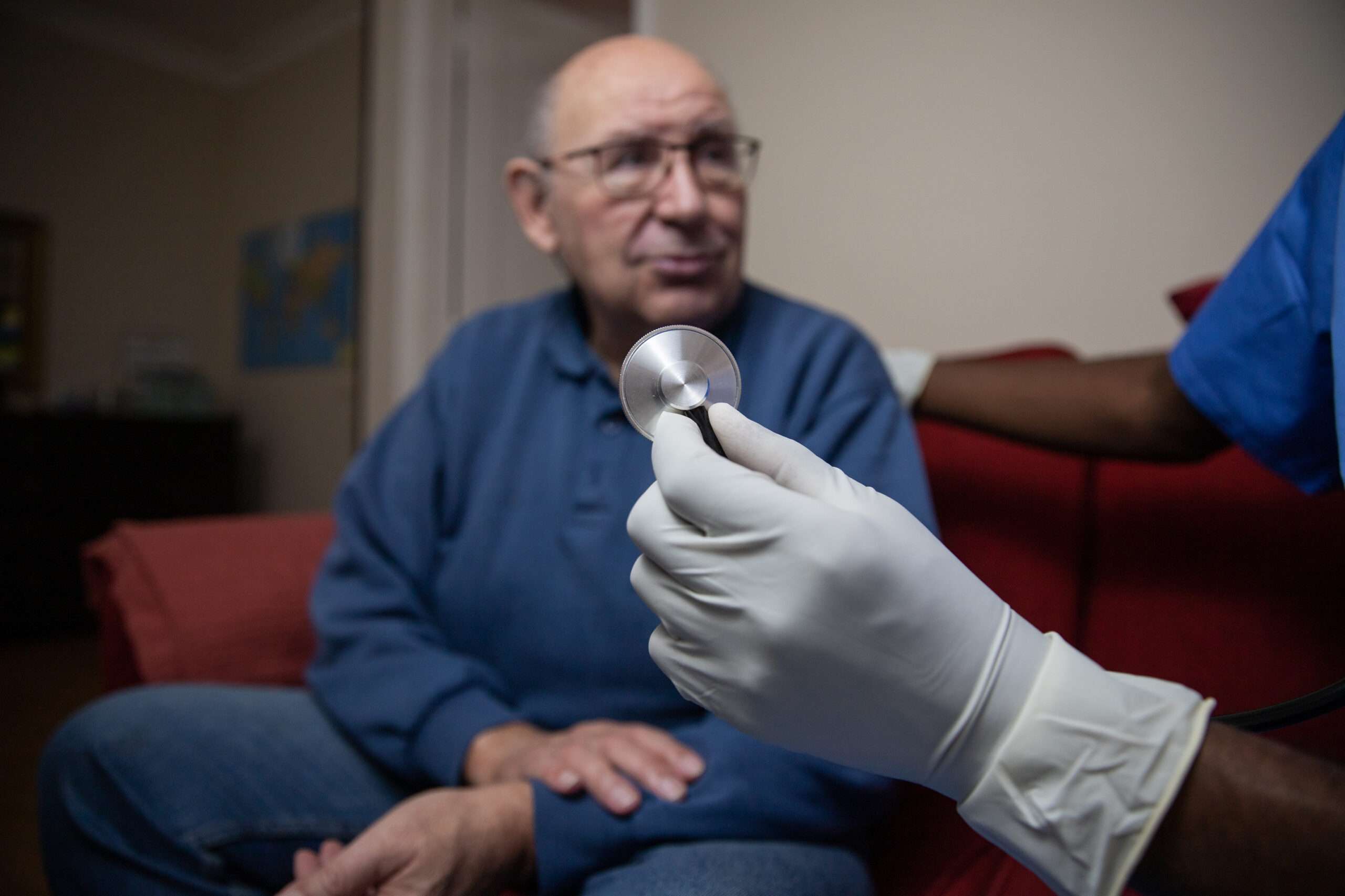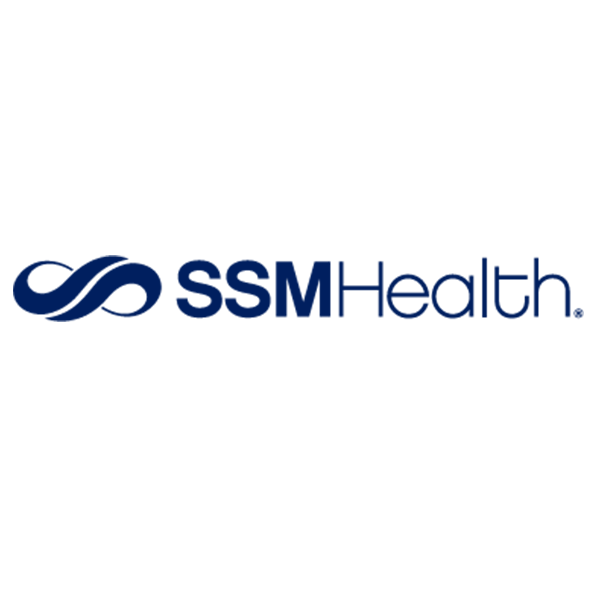As the healthcare industry faces increasing regulatory changes, margin pressures, and rising costs, companies like CVS Health and Humana are feeling the squeeze. Experts emphasize the need for value optimization, with low-cost care settings showing the most potential for success. Inbound Health and Allina Health are leading the way with their innovative Elevated Care at Home (ECH) program. Developed in response to the COVID-19 pandemic, ECH offers an alternative to traditional hospital stays and post-acute care services, improving outcomes while addressing capacity and cost challenges. Together, Inbound Health and Allina Health are transforming transitional care to enhance both quality and affordability.
-
ViVE 2025 Wrapped: AI, Care at Home, and the New Wave of Healthcare Innovation

ViVE 2025 brought together more than 8,000 healthcare leaders, innovators, and changemakers to explore technology’s transformative role in healthcare. This year’s jam-packed agenda tackled pressing topics like artificial intelligence (AI), interoperability, and value-based care. Our team was thrilled to be part of the action in Nashville, engaging in meaningful discussions about innovations reshaping care delivery. Here’s what stood out:
AI Takes Center Stage
AI predictably dominated conversations, signaling its expanding role in healthcare. The application of AI-driven automation is proving invaluable in enhancing clinician workflows and reducing administrative burdens, allowing providers to focus more on direct patient care rather than paperwork.
However, broader AI adoption hinges on thoughtful technology design that fosters trust, addresses ethical concerns, and ensures provider autonomy. Health systems want to invest in AI solutions that empower providers, not create additional challenges. The main takeaway: AI solutions must support the mission of delivering high-quality, patient-centered care.
The Next Phase of Healthcare Transformation
The dialogue at ViVE reflected an industry looking beyond the COVID-19 era, focusing on the next five to ten years. The shift isn’t just about adopting new technology, it’s ensuring healthcare becomes more effective, efficient, and accessible. The industry has seen its share of tech that overpromises and underdelivers, leading to frustration and wasted resources.
The future belongs to solutions that integrate seamlessly into existing workflows, providing actionable insights without adding complexity. While AI and digital health tools are playing an increasingly important role, they don’t replace clinical care. Instead, technology should enable health systems to rethink traditional models and provide care in ways that weren’t possible before—and crucially, enabling providers’ ability to deliver high-quality patient care and exceptional outcomes.
Home-based Care is Here to Stay
Safe and accessible in-home advanced care programs are no longer a nice-to-have, they’re essential. But scaling them requires robust, trustworthy, and reliable technology to support both providers and patients. The infrastructure behind home-based care must be as strong as the clinical expertise driving it.
Our COO, Dave Zimmerman, joined a dynamic ViVE 2025 panel on the evolving landscape of post-acute care at home and its direct connection to value-based care. Key takeaways included:
Care at home is value-based care. Bringing advanced care to the home is financially tied to patient outcomes, making efficiency and effectiveness crucial.
Provider efficiency is a top priority. Organizations are optimizing provider workflows to ensure seamless, effective care at home.
Earlier patient identification is key. Identifying and directing patients to acute and post-acute home-based care sooner improves outcomes and lowers costs.
The business case is strong. Early adopters see increased capacity, stronger patient relationships, better adherence, and fewer readmissions.
Payer buy-in remains a challenge. Proving cost-effectiveness is key to overcoming fee-for service barriers and driving adoption.
Care at home complements traditional hospitals. It expands capacity, optimizes resources, and delivers high-quality care where patients feel most comfortable.
Until Next Year, ViVE!
After four days of thought-provoking discussions, panels, and connections, we left Nashville inspired about what’s ahead. ViVE 2025 reinforced the next chapter of healthcare will extend beyond hospital walls.
The question isn’t whether advanced care at home programs will take a central role—it’s how we ensure the technology, processes, and strategies supporting it work in unison to enable better care without adding unnecessary complexity. We’re excited to keep pushing boundaries, driving transformation, and working alongside our peers to make care at home the standard.
Want to learn how Inbound Health helps health systems scale high-quality care-at-home programs? Get in touch today.
-
Improving Patient Outcomes with Acute Hospital Care at Home

Preliminary Analysis of Hospital Care at Home Performance Outcomes
This preliminary analysis examines performance outcomes in patients discharged to Inbound Health’s Hospital Care at Home program, which meets CMS Acute Hospital Care at Home requirements, within a Minneapolis-based health system.
Patients in Inbound’s program had a lower 30 day readmission rate compared to matched patients based on severity of illness. Also, the mean length of inpatient stay was shorter with the Inbound Health cohort of patients.
We improved care and created greater efficiency for our patients, families, and healthcare systems.
-
Hospital-at-Home Saves Both Lives and Money, but Congress Must Act to Keep It Alive

When it comes to ongoing healthcare initiatives aimed at improving care outcomes, the Acute Hospital Care at Home (AHCAH) program exceeds expectations by also increasing patient comfort, lessening the burden on hospitals, and lowering spending.
While the AHCAH program was launched by the Centers for Medicare and Medicaid Services (CMS) in response to the COVID-19 pandemic and its overwhelm of hospitals, the improved outcomes and lower spending seen with the program have lasted even after the pandemic ended. Offering in-patient level care at home allows hospitals to care for more patients, decreases a backlog of filled beds, and lessens the need for unnecessary procedures and treatments resulting from delayed care. The AHCAH program has shown the benefits it offers to the healthcare system, but it will nevertheless expire if Congress does not act by the end of the year.
Extending the AHCAH Program
The AHCAH program has already been extended once; it was initially planned to last only through the pandemic’s emergency period, but the Consolidated Appropriations Act of 2023 extended AHCAH through December 31st, 2024. Since the time of its expiration has arrived, Congress must once again act to keep in action this initiative that improves outcomes while also lowering healthcare costs, a win for patients and carers alike.
While the deadline is quickly approaching, its renewal is not entirely out of the question. The Telehealth Modernization Act of 2024, which has bipartisan support in the House and Senate, includes an extension of the AHCAH waiver through 2029 that is supported by the American Medical Association. The hospital-at-home waiver offers hospitals reimbursement for providing at-home care to their patients with Medicare and Medicaid. The waiver also removes the requirement that a nurse must be present 24/7.
The Impact of AHCAH’s Expiration or Extension
The AHCAH program is no small feat and has become a cornerstone of Medicare programs. There are over 350 approved hospitals across more than 130 health systems that implement this innovative form of care delivery, and the expiration of the AHCAH program could be detrimental to these systems that rely on providing care-at-home services.
All patients can benefit from AHCAH. Rather than overcrowd hospitals, sometimes to the point where patients receive emergency care in hallways because no rooms are available, patients can be moved to their homes to complete the remainder of their care. For the aging population, care at home offers the opportunity for them to age in place, something that three-quarters of those in the United States over the age of 50 desire.
Knowing the universal benefits of the AHCAH, the expiration of this model can hurt all patients, but especially those with dementia, social barriers, and physical/sensory disabilities—for these individuals, care at home can make all the difference in their comfort, adherence to treatment, and treatment success.
AHCAH also offers healthcare workers a glimpse into the lives of their patients, which offers greater insights that can further improve the care they’re capable of providing.
Additionally, care-at-home programs demonstrate their superiority when it comes to lowering spending while improving healthcare outcomes. A report by CMS found that the mortality rate for AHCAH was lower for all 25 Medicare Severity Diagnostic Related Groups (MS-DRGs) they analyzed and significantly lower for 11 of these 25 MS-DRGs. Spending is lower, as well, with care-at-home shown to have lower Medicare spending in the 30 days after treatment for more than half of the top 25 MS-DRGs.
An extension of the AHCAH initiative gives health systems time to implement a care-at-home program or continue improving and expanding those that are already in place. It allows these facilities to provide for patients who can and want to be treated at home, increasing the care capacity of hospitals without increasing the costs required to provide this care.
How Inbound Health Can Help
If the AHCAH program is extended, it will provide your healthcare system with a vital opportunity to bring the benefits of care-at-home to your patient population, and Inbound Health can help.
Inbound Health partners with health systems to build, launch, and operate acute and post-acute care at home programs, allowing you to take the guesswork out of the best way to bring to life a successful AHCAH program that improves outcomes and lowers spending.
When it comes to the AHCAH program, the ball may currently be in Congress’s court, but you don’t have to wait to learn more about how Inbound Health helps health systems.
References
Fact Sheet: Report on the Study of the Acute Hospital Care at Home Initiative | CMS. (2024, November). Cms.gov. https://www.cms.gov/newsroom/fact-sheets/fact-sheet-report-study-acute-hospital-care-home-initiative
H.R.7623 – 118th Congress (2023-2024): Telehealth Modernization Act of 2024. Congress.gov. https://www.congress.gov/bill/118th-congress/house-bill/7623
Hospital at home saves lives and money: CMS report. (2024). American Medical Association; https://www.ama-assn.org/delivering-care/population-care/hospital-home-saves-lives-and-money-cms-report
Davis, M. R. (2022). 77 Percent of Older Adults Want to Remain in Their Homes as They Age. AARP. https://doi.org/1062105/3752820195
-
SSM Health partners with Inbound Health to offer in-home, hospital quality care to patients

MADISON, WI, NOVEMBER 11, 2024 – SSM Health and Inbound Health, a leading provider of in-home, advanced care programs for health systems, announce another innovative new partnership to bring personalized, in-home, hospital quality health care services to patients.
This week patients at SSM Health St. Mary’s Hospital – Madison who meet specific criteria will have the option to be transferred home to receive services traditionally offered in the hospital with the launch of a new SSM Health at Home program – Hospital Care at Home.
“We’re excited to offer our patients more choices for their care,” said Dr. James Lehman, SSM Health Wisconsin Regional Clinical Program Medical Director. “We recognize that many patients prefer to receive care in their own homes and research shows that they can recover faster there which leads to lower rates of hospital readmissions.”
Patients eligible for the new program will benefit from personalized, daily in-home, and virtual visits by a dedicated team of specially trained physicians, nurses, therapists and other clinicians to ensure that they receive the highest standards of care. Each patient will receive a digital tablet to be used during the program to provide enhanced remote monitoring and round-the-clock assistance from the care team at the touch of a button.
A specialized care coordinator will ensure seamless communication among the patient’s primary care provider, specialty caregivers and support network. Patients in the program will receive the same level of services and equipment typically offered in a hospital setting but within the comfort of their own home.
“Our continued collaboration with SSM Health marks another significant advancement in our collective mission to transform the delivery of high-quality health care services,” said Dave Kerwar, CEO for Inbound Health.
The Hospital Care at Home program builds on the success earlier this year of the two organization’s collaboration to offer in-home, skilled nursing care through SSM Health at Home’s Recovery Care at Home program.
“We are proud to bring another innovative new program to our patients to provide them with exceptional care in their own homes,” said Kyle Nondorf, VP for Acute Care for SSM Health in Wisconsin. “In addition to being cared for in their own homes where they can be surrounded by family and friends, the program helps to free up beds for patients who need to receive care in a traditional hospital setting.”
About Inbound Health:
Inbound Health provides a full stack of capabilities that enable health systems and health plans to offer hospital and skilled nursing facility-level care in the home. With a commitment to quality and compassionate care, Inbound Health has supported the treatment of more than 9,000 patients across 350+ DRGs and counting and will further customize the care model to the needs and strategies of its partners. For more information, visit inboundhealth.com or find us on LinkedIn.
About SSM Health:
Nationally recognized for quality and innovation, SSM Health is a Catholic, not-for-profit, fully integrated health system working to advance health equity and empower all people to achieve their full potential.
With care delivery sites in Illinois, Missouri, Oklahoma, and Wisconsin, SSM Health provides convenient access to high-quality community-based services as well as world-class academic medicine, clinical trials, and research studies. The organization’s footprint includes hospitals, physician offices, outpatient and virtual care services, senior care, comprehensive home care and hospice services, a fully transparent pharmacy benefit company, a health insurance company, and an accountable care organization.
As one of the largest employers in every community it serves, the organization’s 40,000 team members and 13,900+ providers are dedicated to fulfilling SSM Health’s Mission: “Through our exceptional health care services, we reveal the healing presence of God.” Like our founding sisters, we care deeply for our communities — SSM Health reported $470 million in community benefit in 2023, including the provision of more than $346 million in uncompensated care. For more information, visit ssmhealth.com or find us on Facebook and LinkedIn.
Media Contacts:
Ryan Carmel
Inbound Health
612-444-3744
Kathryn Scott
SSM Health
608-381-8124
-
Advanced Care-at-Home Programs Drive Value for Heart Failure Patients

Authors: Mary Oberst MSC, Camilla Dziura MHA, Seth Glickman, M.D., MBA,
Rachel Rivard, M.D., Kimberly Hedger, Emily Downing, M.D.
Preventable heart failure readmissions pose a significant financial challenge to hospitals and health systems. Reducing 30-day heart failure readmissions optimizes reimbursement for hospitals that participate in CMS value-based programs, such as the Hospital Readmissions Reduction Program (HRRP), which incentivizes processes of care that decrease preventable events and thereby reduce overall readmission rates.
Advanced care-at-home programs that serve as alternatives to extended hospitalization and institutional post- acute care offer an innovative and effective solution for hospitals seeking to optimize patient outcomes and reduce avoidable readmissions, resulting in substantial financial gains.
In implementing Inbound Health’s novel in-home care model that supports early hospital discharge and provides an alternative to institutional post-acute care, Allina Health was able to reduce 30-day readmissions in their heart failure population by 30% over a 2.8-year period, generating significant cost- savings for the health system.
-
Acute and Post-Acute Care at Home Programs Contribute to Shorter Hospital Length of Stay

1 less day in the hospital
Average traditional hospital stay: 7.4 days
Average discharge to acute or post-acute care at-home programs: 6.4 days
A study by Inbound Health analyzed the length of stay (LOS) for patients discharged to one of their acute or post-acute care-at-home programs, comparing it to those who remained in the hospital for all their acute care needs. The goal was to determine if receiving advanced care at home results in a shorter hospital stay compared to patients who did not have alternative care options.
Researchers reviewed a substantial dataset comprising 10,519 care episodes over three years, from 2021 to 2023. This extensive review allowed for a detailed examination of patient outcomes, length of stay, costs, and other key metrics associated with both care models.
The research comparing hospital length of stay (LOS) for patients discharged to Inbound Health’s acute and post-acute care-at-home programs versus those who completed their acute care in the hospital shows an average reduction of one day for those receiving home-based care. For treatment of sepsis, respiratory failure, and kidney and urinary tract infections, the reduction in LOS ranged from one to two days.
The increase in throughput has multiple benefits for health systems. It allows hospitals to handle more patients within existing infrastructure and resources, effectively increasing their overall capacity to deliver healthcare services. The shorter LOS also reduces the cost of care for healthcare providers and payers.
Researchers concluded there were several factors that shortened the hospital LOS for patients who were discharged to Inbound Health’s care at home programs:
Focused Care Delivery: Inbound Health’s program typically has a narrower focus on recovery compared to traditional healthcare facilities, which may also provide long-term care services. This focused approach allows for more efficient and goal-oriented care delivery, helping patients achieve their recovery goals sooner and facilitating timely discharge from the hospital.
Streamlined Admission Process: With Inbound Health’s program, there is a streamlined admission process, enabling patients to transition quickly from the hospital to home-based care. This reduces administrative delays and logistical challenges associated with facility-based admissions, allowing patients to ultimately spend fewer days in the hospital.
Close Monitoring and Supervision: Patients in Inbound Health’s program receive close monitoring and supervision from skilled healthcare professionals, including nurses, therapists, and physicians. This intensive oversight helps detect and address any complications or barriers to recovery promptly, optimizing the recovery process and minimizing hospital stays.
Enhanced Care Coordination: The program prioritizes care coordination between hospital teams and at home providers, ensuring seamless transitions and continuity of care. This collaborative approach facilitates discharge planning and post-discharge support, reducing the likelihood of hospital readmissions and enabling patients to leave the hospital sooner.
Inbound Health’s care at home programs provide a thorough and patient-centered approach to care, emphasizing both individualized attention and efficient delivery. By addressing the unique needs of patients moving from hospital to home, this program accelerates recovery, enhances outcomes, and reduces the length of hospital stays.
-
Innovative Solutions to Hospital Overcrowding

Hospital overcrowding has become a widespread issue in healthcare systems worldwide, straining resources, compromising patient care, and challenging the resilience of medical professionals. The problem is complex, stemming from factors like population growth, aging demographics, limited hospital capacity, and seasonal outbreaks. However, innovative solutions are emerging, offering hope for alleviating the strain and improving healthcare delivery.
The Challenges:
Reduced Quality of Care: Overcrowded hospitals often lead to limited resources, increased wait times, and compromised quality of care. Medical staff may find it challenging to provide individualized attention and timely treatments.
Increased Risks of Infections: Congested hospitals increase the risk of hospital-acquired infections, posing a threat to both patients and healthcare workers. Containing the spread of infections becomes increasingly difficult in crowded environments.
Burnout Among Healthcare Professionals: Overworked medical staff, faced with the pressure of managing high patient volumes, are at risk of burnout, which can negatively impact their well-being and job satisfaction, ultimately affecting patient care.
Higher Costs: Hospital overcrowding is not only detrimental to patient health but also incurs substantial financial costs for healthcare systems. Increased demand for services, coupled with resource shortages, drives up operational expenses.
Creative Solutions to Hospital Overcrowding:
Despite the complexities of hospital overcrowding, several innovative solutions are being implemented to the widespread problem.
Telemedicine and Remote Patient Monitoring: Telemedicine offers a viable solution to alleviate overcrowding by providing remote consultations and monitoring for non-emergency cases. Patients can receive medical advice and follow-up care without the need for in-person visits, reducing the burden on hospitals.
Community-Based Care Initiatives: Community-based healthcare programs aim to divert non-urgent cases away from hospital emergency departments by providing alternative care options. These initiatives include urgent care centers, mobile clinics, and home healthcare services, effectively easing the strain on hospital resources.
Advanced Predictive Analytics: Predictive analytics tools leverage data insights to forecast patient admission rates, enabling hospitals to anticipate peak demand periods and allocate resources more efficiently. By proactively managing patient flow, hospitals can mitigate overcrowding and improve operational efficiency.
Hospital-at-Home Programs: Hospital-at-home models deliver acute care services to patients in their own homes, offering an alternative to traditional hospitalization. With advances in technology and medical equipment, many treatments and monitoring procedures can now be administered outside hospital settings, reducing the need for inpatient beds.
Collaborative Partnerships: Collaborative efforts between healthcare institutions, government agencies, and community organizations are essential for addressing the root causes of hospital overcrowding. By pooling resources and expertise, stakeholders can develop comprehensive strategies to enhance healthcare access, optimize resource utilization, and improve patient outcomes.
Hospital overcrowding is a significant challenge for many healthcare systems worldwide, jeopardizing patient safety, straining resources, and impacting the well-being of medical professionals. However, through innovation and collaboration, solutions are emerging to mitigate the effects of overcrowding and improve healthcare delivery. From telemedicine and community-based care initiatives to advanced analytics and hospital-at-home programs, creative approaches are reshaping the future of healthcare, offering hope for a more efficient, patient-centered system. By embracing these solutions and fostering partnerships across the healthcare ecosystem, we can work towards a future where hospital overcrowding is no longer a barrier to quality care.
Explore how Inbound Health empowers healthcare systems to launch, expand, and manage acute and post-acute care at home programs.

